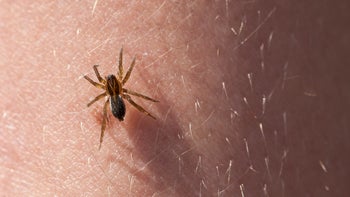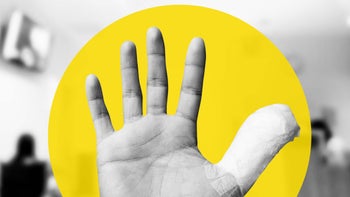
How to Treat a Burn, and What to Put on It for Relief
Key takeaways:
You can care for minor burns at home. To keep your burned skin safe from infection, be sure to cool, clean, and dress it.
Some things you can put on burns include antibiotic ointment, petroleum jelly, and wound dressings.
Don’t put ice, butter, oil, egg whites, or toothpaste on a burn. These things can cause infection.
Table of contents
You’re likely familiar with a skin burn and the range of sources that can cause tissue damage, from the sun and fire to hot liquids and steam. But you may be less familiar with what to do when you get a burn, especially in the heat of the moment. We’ve got you covered, from what to put on a burn to the signs that your burn needs medical attention.
The good news is that you can treat superficial burns at home. And you may already have some ointments in your medicine cabinet that can help. But there are also some products you should avoid.
Here are some dos and don’ts for what to put on burns — and when to get emergency medical care.
When should you get medical attention for a burn?
Though you can treat minor burns at home, more serious burns may need urgent medical attention.
Search and compare options
Severe burns
It’s important to be able to recognize the signs of a serious burn. Get immediate medical attention or call 911 when the burn:
Involves the face, neck, genitals, hands, feet, or major joints
Is large in size (the size of your palm or bigger is a good rule of thumb)
Looks white or charred (which is a sign of a third-degree, or “full-thickness” burn)
Isn’t painful (which can also be a sign of a third-degree burn)
Causes a fever, intense pain, or trouble breathing
Is a chemical or electric burn
You should also get immediate medical attention if you get exposed to toxic fumes while getting burned.
Minor burns (first and second degree)
Minor burns can usually be treated at home. This includes first-degree and second-degree burns:
First-degree burn: This is a superficial burn, like a mild sunburn. With this type of burn, the skin looks red and is painful to the touch, but there’s no blistering.
Second-degree burn: This is a partial-thickness burn in which the burn reaches below the top layer of skin. Second-degree burns are painful, but that’s actually a good sign. It means that the burn didn’t kill off your nerve cells. You may also see blisters or notice that the skin appears wet. These are signs that you have more extensive skin damage from the burn and may need medical attention.
How to treat a burn

First things first, move away from the source of the burn to prevent any further injury. First-degree burns can be treated at home. So can second-degree burns, as long as they’re small and don’t cover a large surface area.
When should you go to the ER for a burn? An emergency doctor explains how to know if your burn needs immediate medical care.
Comparing antibiotic ointments: If you’re deciding between bacitracin, Polysporin, and Neosporin, this short guide can help you choose.
How to spot skin infections: It’s important to monitor your burn for signs of skin infection and, if needed, get treatment sooner rather than later.
To treat a minor burn, follow these steps:
Remove any clothing and jewelry. Take off anything covering your burned skin. Since burned skin swells, be sure to also take off any jewelry, especially rings.
Cool the burn. You can cool the area of the burn by placing it under cool or room-temperature running water. Avoid very cold water and ice.
Wash the burn. Gently wash your burn with soap and cool water. A burn is a type of wound. So, it’s important to keep it clean to avoid infection.
Apply ointment. Once your burn is clean, apply a thin layer of antibiotic ointment. This keeps your skin safe from bacteria and helps prevent infection. Ointments also create a barrier so the dressing doesn’t stick to your skin.
Add a clean dressing. After applying ointment, wrap your burn in a dressing. Use a sterile basic gauze. Or you can place a nonstick pad (like Telfa or Adaptic) over the ointment and wrap the area loosely with gauze. Change your dressing once to twice a day, or anytime it gets dirty or wet.
Take oral pain medications. If you’re experiencing pain from the burn, you can take acetaminophen (Tylenol), ibuprofen (Motrin, Advil), or naproxen (Aleve).
Stay hydrated. Your skin is a barrier that keeps infections out and fluids in. When your skin breaks down, you can lose fluids faster. Stay hydrated to keep up with any fluid loss.
Monitor your burn. Burns can change a lot in the first 48 hours. If you see signs of infection (like worsening redness or swelling), get medical attention right away.
Don’t pop blisters. Blisters protect the skin. And popping burn blisters can let bacteria into your wound and cause infection. So take care to not disturb your blisters when treating your burn.
Protect your burned skin. It’s also important to protect your burned skin from ultraviolet (UV) rays. Keep the area covered when you’re outdoors.
If you have a severe burn, get emergency medical attention immediately. In the meantime, you can cover the burn with a clean dry cloth or sterile bandage. Remember: Don’t put ice or very cold water on the burn. This can cause more damage.
How long do burns take to heal?
A superficial burn (or, first-degree burn) usually heals on its own within a week. A second-degree burn usually heals within 2 weeks. First- and second-degree burns usually don’t cause any significant scarring. But it’s important to keep the skin clean and dry while it’s healing to prevent an infection.
Which topical ointments or creams can you put on a burn?
There are several topical burn ointments that can help with healing and pain relief.
Antibiotic ointments
Popular over-the-counter (OTC) burn ointments include:
Polysporin (bacitracin/polymyxin B)
Neosporin (bacitracin/polymyxin B/neomycin)
Mupirocin is another option that’s available with a prescription.
Antibiotic ointments are easy to find and relatively inexpensive. So, they’re a popular option to apply to burns. You can apply the ointment 2 to 3 times per day or any time you change the dressing.
Silver sulfadiazine
Silver sulfadiazine is an antibacterial cream. It’s available by prescription and helps prevent infection. But it can slow skin healing and may increase your risk of developing scars. If you’re prone to scarring, talk with your primary care provider about whether a different burn ointment is right for you.
Don’t use silver sulfadiazine if you’re pregnant or nursing. It’s also not safe for babies younger than 2 months.
Special dressings
Some wound dressings have wound-healing products built into them. With these dressings, you don’t have to apply an ointment before adding a dressing. This saves you a step in your care routine. Like burn ointments, these wound-healing products keep skin safe from damage and help speed up skin healing. But, these dressings are more expensive.
Special wound dressings include:
Hydrocolloids (DuoDerm)
Hydrogels (IntraSite, Aqua Clear)
Silver impregnated dressings (Acticoat, Aquacel Ag, Mepilex Ag)
Impregnated nonadherent gauze (Xeroform or Vaseline gauze)
What should you avoid putting on a burn?
There are a few things you should not put on a burn, such as:
Ice: Many people make the mistake of putting ice on their burn. But instead of helping a burn, ice causes more damage to burned skin. Stick to cool or room-temperature water.
Butter and oil: Fats, like butter and oil, can trap heat in the skin and cause more damage. Since they’re not sterile, they can also introduce bacteria into your wound and cause infection.
Egg whites: Raw egg whites can carry dangerous bacteria, like salmonella. Salmonella is a bacteria that causes serious infections when it enters the body.
Honey: There’s some evidence that medical-grade honey can help with minor burns. But keep in mind that the honey you have at home isn’t the same. Unless you’re in the wilderness and nothing else is available, avoid putting regular honey on your burn.
Toothpaste: Toothpaste contains compounds like fluoride and whiteners. These are great for your teeth but will further irritate your damaged skin. It can also cause infection.
Steroid creams: Steroid creams, like hydrocortisone, interfere with wound healing.
What home remedies are good for burns?
Not all home remedies are bad for burns. Some things you can put on a burn include:
Aloe vera: With minor burns, like a sunburn, aloe vera helps soothe and moisturize skin. There’s also evidence that aloe vera may help with skin healing.
Cool compresses: A cool compress relieves pain and soothes skin. You can soak a cloth or gauze in cool water and place it over the burn for 10 minutes at a time.
Vaseline: For minor burns, you can use Vaseline (petroleum jelly) as a barrier ointment instead of antibiotic ointment. It will keep dressings from sticking to your burn.
Frequently asked questions
You should keep your burn covered to help prevent infection. Since a burn is like an open wound, a dressing will help keep your burn clean and dry. It’s best to use a sterile dressing, like gauze, and not wrap your burn too tight.
It depends on what type of burn you have. A more serious second-degree burn will blister right away. A more minor second-degree burn can take several hours to blister. But anytime a burn blisters, it’s considered a second-degree burn.
No, you shouldn’t apply mustard to your burns. There’s no scientific evidence that this is helpful. And, like the other home remedies that could be dangerous (as discussed above), it can increase the risk of infection and irritation.
There are many different types of burns. These are characterized by the source that results in tissue damage, including:
Radiation burn: The sun’s UV rays are a common culprit of this type of burn.
Thermal burn: This is a burn from a heat source, like very hot liquids, steam, or flame from a fire.
Electrical burn: Coming into contact with electricity can cause serious injury, both to your skin and internally. Get medical attention for this type of burn.
Chemical burn: Some powerful detergents and solvents can burn your skin or eyes. Get medical attention for this type of burn.
The bottom line
It’s important to know what kind of burns need immediate medical attention. You can usually care for small, minor burns at home using ointments that may already be in your medicine cabinet. Vaseline, antibiotic ointments, and gauze are enough to keep a minor burn safe from infection. You shouldn’t put oil, butter, egg whites, or toothpaste on a burn. These things can lead to more skin damage or infection.
Why trust our experts?



References
3M. (n.d.). Adaptic non-adhering dressing.
American Academy of Dermatology Association. (n.d.). How to treat a first-degree, minor burn.
American Burn Association. (n.d.). First aid for minor burns.
Cardinal Health. (n.d.). Telfa Ouchless Non-Adherent Dressing Gauze Pad, Non-Sterile.
Khansa, I., et al. (2019). Silver in wound care—friend or foe?: A comprehensive review. Plastic and Reconstructive Surgery - Global Open.
Maenthaisong, R., et al. (2007). The efficacy of aloe vera used for burn wound healing: A systematic review. Burns.
McLure, M., et al. (2021). A rapid review of burns first aid guidelines: Is there consistency across international guidelines? Cureus.
MedlinePlus. (2024). Minor burns - aftercare.
National Health Service. (2022). Recovery: Burns and scalds.
Singletary, E. M., et al. (2015). Part 15: First aid: 2015 American Heart Association and American Red Cross guidelines update for first aid. Circulation.
Wasiak, J., et al. (2013). Dressings for superficial and partial thickness burns. Cochrane Database of Systematic Reviews.
Wijesinghe, M., et al. (2009). Honey in the treatment of burns: A systematic review and meta-analysis of its efficacy. The New Zealand Medical Journal.













